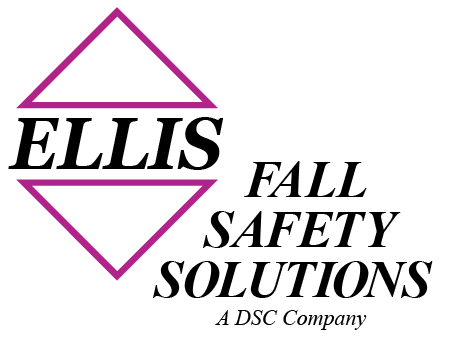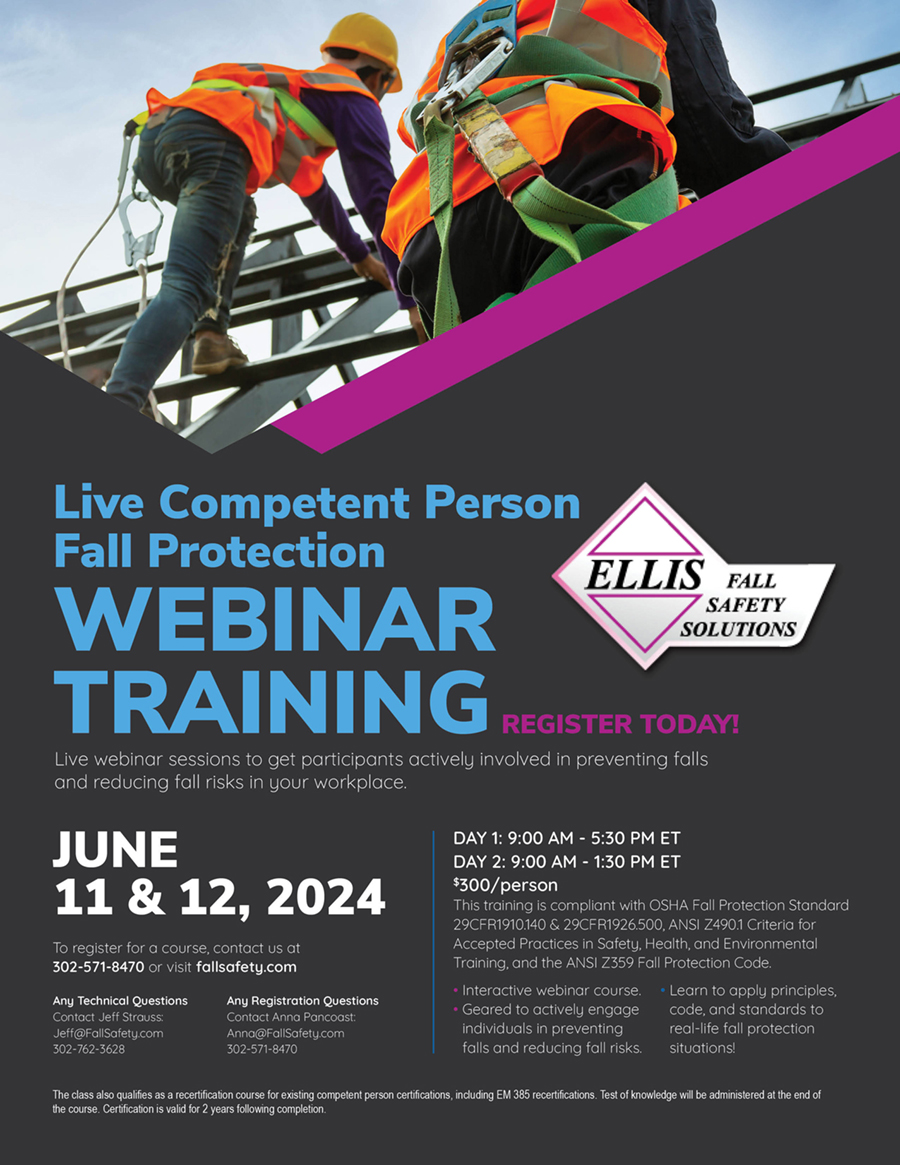Tip of the Week No. 139 – 12/11/06 – Loss of balance on stairs
A loss of balance can occur from a slip or trip while an individual is traveling up or down a stairway. The vast majority of falls occur when someone is moving down stairs and not holding the handrail.
The additional danger of a stair fall is that the victim can continue to move or “fall” down the remainder of the flight, potentially cuasing a multitude of injuries.
See “Introduction to Fall Protection, 3rd Edition” page 81.
This book is an invaluable resource for every safety manager’s library. Click here to find out about ordering a copy. Order online now.
Tip of the Week No. 125 – 08/28/06 – Stairs/Escalators
Escalators should be considered as a replacement for high-traffic stairs. Elevators should be considered for multiple-floor access to reduce pedestrian fall exposure on stairs, and should also be used for the movement of furnishings to and from upper floors.
Additionally, use by rescue personnel, people carrying small children, and older or infirm persons points to the need for elevators. Stairways should be relegated to emergency egress in commercial buildings.
See “Introduction to Fall Protection, 3rd Edition” page 83.
This book is an invaluable resource for every safety manager’s library. Click here to find out about ordering a copy. Order online now.
Tip of the Week No. 14 A – 03/08/04 Stairs
On a stair, a difference of 1/4 inch in the height of any one step can invite falls; any variance should be reduced to 1/16 inch or less.
See “Introduction to Fall Protection, 3rd Edition” page 83.
How about ordering a copy of for yourself? Order online now.
Tip of the Week No. 44 A – 10/18/04 Stairs.
On a stair, a difference of 1/4 inch in the height of any one step can invite falls; any variance should be reduced to 1/16 inch or less.
See “Introduction to Fall Protection, 3rd Edition” page 83.
How about ordering a copy for yourself? Order online now.
Tip of the Week No. 45 A – 10/25/04. Stair Safety
Nosings on steps need tight specifications for strength and durability because most of a worker’s weight is put on the leading edge of the step.
See “Introduction to Fall Protection, 3rd Edition” page 82.
How about ordering a copy for yourself? Order online now.
Tip of the Week No. 105 – 03/27/06 – Stairs
For most hand sizes, the ideal shape of stair handrails is round, 1.5 inches in diameter.
Other shapes may also be firmly graspable (nominal circumference of 4 to 6.5 inches).
However, many other shapes may only provide a pinch grip and are, therefore, unsuitable for maintaining balance.
See “Introduction to Fall Protection, 3rd Edition” page 82.
This book is an invaluable resource for every safety manager’s library. Click here to find out about ordering a copy. Order online now.
Tip of the Week No. 316 – 04/11/2011 – Falls on Stairs
A loss of balance can occur from a slip or trip while an individual is traveling up or down a stairway. The vast majority of falls occur when someone is moving down stairs and not holding the handrail.
The additional danger of a stair-fall is that the victim can continue to move or “fall” down the remainder of the flight, potentially causing a multitude of injuries.
See “Introduction to Fall Protection, 3rd Edition” page 81.
This book is an invaluable resource for every safety manager’s library. Click here to find out about ordering a copy. Order online now.
Tip of the Week No. 350 – 02/11/2013 – Stair Tread
Given that stairs users’ feet typically have an initial contact with the treads with their motion being downward or in the direction of the back of the tread, true slips – as the initial misstep – are less a concern for stairs than they are for other walking surfaces, especially ramps. Thus, tread surfaces that have slip resistance similar to what is accepted for floors – for the contaminant conditions expected for such surfaces – should be acceptable for reasonable safety. The NFPA Life Safety Code ANSI/NFPA 101 has, for some editions, called for consistency in the tread slip resistance over the entire tread surface.
See “Introduction to Fall Protection, 4th Edition” page 114.
Introduction to Fall Protection, 4th Edition now available for purchase. To order your copy call 1-800-372-7775 or order online at Introductionto Fall Protection, 4th Edition Orders.
Tip of the Week No. 351 – 02/18/2012 – Stair Rails
Only ladder rungs meeting OSHA and ANSI standards should be held while climbing. Because of the narrow climbing surface, the hands must grip securely to avoid a fall. Only on horizontal bars are the hands reliable for holding the body weight for a brief time (sufficient for the feet to regain the rung). However, a near-vertical bar cannot be held securely in any fall situation. Sloped rails have been shown to be appropriate up to a certain pitch.
See “Introduction to Fall Protection, 4th Edition” page 124.
Introduction to Fall Protection, 4th Edition now available for purchase. To order your copy call 1-800-372-7775 or order online at Introductionto Fall Protection, 4th Edition Orders.
Please select a category from the list below
- Aerial Lifts/Platforms
- Anchorage Points
- Calculations
- Construction Contracts
- Consulting
- Cranes
- Descent Devices
- Ellis Articles
- Ellis Presentations
- Equipment Maintenance
- Ergonomics/Human Factors
- Fall/Safety Statistics
- FP systems, programs
- Guardrails
- Harnesses, FP Equipment, HLL, SRL
- Hazards
- Holes/Pits
- Ladders
- Lanyards/Twin Tail Lanyards
- Misc.
- Nets
- New
- NIOSH
- OSHA News/Citations
- PFAS
- Rescue
- Roofs
- Ropes
- Safety Cases
- Safety Organizations
- Scaffolds
- Skylights
- Stairs
- Standard/Regulations
- Steel Erection
- Tanks
- Towers
- Training
- Tree Stands
- Trucks
- Tying Off
- Veterans of Safety
- Window Cleaners
- Workers Comp

